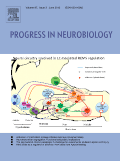
Current Opinion in Behavioral Sciences
Scope & Guideline
Transforming Knowledge into Practice in Behavioral Neuroscience
Introduction
Aims and Scopes
- Cognitive Flexibility and Its Mechanisms:
The journal consistently explores the concept of cognitive flexibility, examining how individuals adapt their thinking and behavior in response to changing environments. This includes discussions on neural correlates, training methodologies, and implications for mental health. - Emotional and Social Neuroscience:
Research frequently addresses the interplay between emotions and social behaviors, emphasizing how neural mechanisms underpin social interactions and emotional regulation. This encompasses studies on resilience, stress responses, and affective touch. - Neurodevelopment and Behavioral Health:
The journal highlights studies on neurodevelopmental trajectories and their impacts on behavioral health, particularly in children and adolescents. This includes resilience-promoting interventions and the effects of early experiences on later outcomes. - Artificial Intelligence in Behavioral Research:
There is an emerging focus on the application of artificial intelligence techniques in behavioral sciences, particularly in mental health contexts. This includes innovations in stress detection and intervention strategies. - Evolutionary Perspectives on Cognition and Behavior:
The journal also delves into evolutionary aspects of cognition and behavior, exploring how evolutionary history shapes contemporary behavioral traits and neural architectures.
Trending and Emerging
- Neuroscience of Stress and Resilience:
There is a marked increase in research on stress and resilience, particularly in the context of modern societal challenges like the COVID-19 pandemic. This includes investigating neurobiological mechanisms and interventions that promote resilience in vulnerable populations. - AI and Machine Learning Applications:
The integration of artificial intelligence and machine learning in behavioral research is gaining traction. Recent studies explore how these technologies can enhance understanding and treatment of mental health issues, indicating a trend towards innovative, data-driven approaches. - Cerebellar Contributions to Behavior:
An emerging focus on the cerebellum’s role in cognition and behavior is evident, with several papers discussing its implications for mental health and neurodevelopment. This suggests a growing recognition of the cerebellum beyond its traditional associations with motor control. - Transdiagnostic Approaches to Mental Health:
There is a rising trend towards transdiagnostic frameworks that examine commonalities across various psychological disorders. This approach reflects a shift towards understanding underlying mechanisms rather than isolated symptoms. - Interdisciplinary Perspectives on Climate Change:
Recent publications highlight the intersection of behavioral sciences with environmental issues, particularly how cognitive and emotional factors influence climate change perceptions and behaviors. This trend emphasizes the importance of behavioral interventions in addressing global challenges.
Declining or Waning
- Traditional Behavioral Interventions:
There has been a noticeable decline in papers focused on traditional behavioral interventions, such as basic behavioral modification techniques. The shift appears towards more integrative approaches that consider neurobiological underpinnings. - Dehumanization and Its Constructs:
Themes surrounding dehumanization have seen reduced frequency, suggesting a potential waning interest in this area. As the field evolves, researchers may be moving towards more nuanced explorations of social cognition and empathy. - Simple Cognitive Training Techniques:
Research focusing on straightforward cognitive training methods, such as basic task-switching paradigms, has decreased. Instead, the emphasis is now on understanding the complex dynamics of cognitive flexibility and its neural representations.
Similar Journals

Frontiers in Integrative Neuroscience
Connecting minds through integrative neuroscience.Frontiers in Integrative Neuroscience, published by FRONTIERS MEDIA SA, is an esteemed open-access journal dedicated to advancing our understanding of the intricate workings of the nervous system. Since its inception in 2007, this journal has become a key resource for researchers and professionals in the field, covering a wide range of topics including cellular and molecular neuroscience, cognitive neuroscience, and sensory systems. With a reputation bolstered by its open-access model, Frontiers in Integrative Neuroscience aims to promote expedient dissemination of high-quality research, ensuring that all findings are readily accessible to the scientific community and beyond. The journal has achieved a commendable recognition, ranking in the upper tiers of its respective categories according to Scopus, with a Q2 ranking in both cognitive neuroscience and sensory systems, and a Q3 ranking in cellular and molecular neuroscience. Based in Switzerland, it continues to be a pivotal platform for innovative research that shapes our understanding of neural dynamics, encouraging collaboration and knowledge exchange among scholars worldwide.

Social Neuroscience
Illuminating the Links Between Social Interaction and Brain FunctionSocial Neuroscience is a premier academic journal dedicated to advancing the interdisciplinary field that lies at the intersection of social psychology, behavioral neuroscience, and developmental studies. Published by ROUTLEDGE JOURNALS, TAYLOR & FRANCIS LTD, this journal has made significant strides since its establishment in 2006, with a convergence period extending to 2024. It regularly features innovative research articles that explore the neural basis of social behaviors and the impact of social interactions on brain function. Holding esteemed rankings in Scopus, including Q2 status in both Development and Social Psychology categories, it appeals to a broad array of scholars and practitioners keen on understanding human behavior through a neuroscientific lens. The journal's commitment to fostering critical discussions and publishing impactful research makes it an essential resource for professionals, researchers, and students alike who seek to deepen their understanding of the complex interplay between social processes and neural mechanisms.

Journal of Integrative Neuroscience
Integrating Knowledge for a Deeper Understanding of NeuroscienceWelcome to the Journal of Integrative Neuroscience, a prominent platform dedicated to advancing the field of neuroscience by fostering interdisciplinary research and innovation. Published by IMR PRESS, this open-access journal has been committed to disseminating high-quality research since its inception in 2002, with a vision to integrate various aspects of neuroscience, from theoretical foundations to applied methodologies, ultimately enhancing our understanding of the brain and nervous system. With an evolving presence in the academic community, the journal holds significant rankings, such as Q2 in Medicine and Q3 in Neuroscience for 2023, reflecting its growing impact and value to researchers and professionals alike. The journal is accessible globally, having adopted an open-access model in 2018, ensuring that vital neuroscience findings reach a broader audience without barriers. Positioned in Singapore and serving an international readership, the Journal of Integrative Neuroscience is your essential resource for the latest insights and discoveries in a rapidly evolving field.

Journal of Cognitive Enhancement
Pioneering Research for a Brighter Cognitive Future.Journal of Cognitive Enhancement, published by SpringerNature, is a premier academic platform dedicated to advancing knowledge in the fields of Cognitive Neuroscience, Behavioral Neuroscience, and Experimental Psychology. With an electric combination of rigorous research and innovative practice, this journal has established itself as an essential resource for researchers, professionals, and students interested in understanding the mechanisms behind cognitive enhancement and its implications for mental health and cognitive function. As of 2023, it is recognized in the Q2 and Q3 quartiles across several categories, demonstrating its solid impact in the academic community, particularly with an impressive Scopus ranking of #27/76 in Neuropsychology and Physiological Psychology. Operating in a competitive landscape, the Journal of Cognitive Enhancement fosters open dialogue and collaboration through valuable contributions to cognitive research, facilitating insights that are crucial for practical applications in clinical and educational settings. While specific open access options are currently not defined, we encourage all interested scholars to explore the rich database of published works dating from 2017 to 2024, contributing to this dynamic field of study.

Brain Sciences
Transforming Understanding of Neurological ScienceBrain Sciences is a distinguished open-access journal published by MDPI, focusing on a wide array of topics within the field of neuroscience. Established in 2011, this journal has positioned itself as an essential resource for researchers and professionals eager to explore innovative advancements in understanding brain function, neurological disorders, and cognitive processes. With an impactful reach, the journal has achieved a Q2 ranking in the miscellaneous Neuroscience category for 2023 and is recognized in the Scopus database, holding a rank of #59 out of 113 in general neuroscience—a testament to its growing influence and credibility. Based in Basel, Switzerland, Brain Sciences offers rigorous, peer-reviewed research and contributes significantly to the global discourse in neuroscience. Its open-access model ensures that cutting-edge findings are readily available to the academic community, fostering collaboration and knowledge sharing. As it continues to bridge the gap between research and practice, Brain Sciences is poised to be an invaluable asset for students, researchers, and professionals striving to push the boundaries of neuroscience.

JOURNAL OF PSYCHOPHYSIOLOGY
Pioneering Research in Neuropsychology and BeyondJOURNAL OF PSYCHOPHYSIOLOGY, published by Hogrefe Publishing Corp, serves as a crucial platform for the dissemination of research in the interdisciplinary fields of neuropsychology, physiological psychology, and neuroscience. With an ISSN of 0269-8803 and an E-ISSN of 2151-2124, this journal has been a staple in the academic community since its inception in 1987 and will continue to publish impactful research until at least 2024. Despite the absence of Open Access, the journal maintains a significant presence, holding Q3 and Q4 quartile rankings in relevant disciplines according to the 2023 metrics. Researchers and practitioners benefit from the journal's robust focus on integrating psychophysiological research with practical applications, contributing to a better understanding of psychological processes through physiological insights. As evident from its Scopus rankings, the JOURNAL OF PSYCHOPHYSIOLOGY is dedicated to fostering scholarly dialogue and advancing knowledge in the field, making it an essential resource for anyone invested in the intricacies of human behavior and the physiological underpinnings thereof.

Annals of Neurosciences
Advancing Insights into Neural MechanismsAnnals of Neurosciences, published by SAGE Publications Ltd, is a distinguished journal that serves the vibrant field of neuroscience. With an ISSN of 0972-7531 and E-ISSN 0976-3260, it has been a significant platform for advancing knowledge in various aspects of neuroscience since its inception. The journal, positioned in the Q3 category in the realm of neurosciences (miscellaneous) as of 2023, aims to bridge the gap between basic research and clinical practices, providing a comprehensive forum for the dissemination of innovative research, reviews, and insights within the field. With a convergence period from 2011 to 2024, it continually emphasizes the importance of interdisciplinary approaches in understanding neural mechanisms and their implications for mental health and neurological disorders. The journal's open access options ensure that research findings are widely available, fostering collaboration and dialogue among researchers, professionals, and students globally. Located in London, England, the Annals of Neurosciences stands out as an essential publication for those aiming to stay at the forefront of neuroscience research and application.

INTERNATIONAL JOURNAL OF DEVELOPMENTAL NEUROSCIENCE
Unveiling the Complexities of the Developing BrainThe INTERNATIONAL JOURNAL OF DEVELOPMENTAL NEUROSCIENCE is a critical platform for disseminating cutting-edge research in the field of developmental biology and neuroscience. Published by WILEY, this esteemed journal has been contributing to the academic community since its inception in 1983, and continues to serve as a vital resource through to 2024. With an impact factor that reflects its influence in the field—ranking in Q3 for both Developmental Biology and Developmental Neuroscience—this journal presents an opportunity for researchers, professionals, and students alike to engage with pioneering studies and extend their understanding of complex developmental processes. Although not open access, the journal provides an essential repository of knowledge for those seeking to explore the nuances of neurological development and related disciplines. It actively supports academic discourse and research dissemination, thereby playing a significant role in advancing our collective understanding of developmental neuroscience.

Behavioral and Brain Functions
Fostering Open Access to Groundbreaking ResearchBehavioral and Brain Functions is a leading Open Access journal published by BMC, dedicated to advancing the field of behavioral neuroscience, cognitive neuroscience, and biological psychiatry since its inception in 2005. This esteemed journal, based in the United Kingdom, has established itself as a vital resource for researchers and professionals, boasting a remarkable influence demonstrated by its Q1 and Q2 rankings across multiple relevant categories. With its commitment to providing unrestricted access to high-quality research, the journal facilitates the dissemination of significant findings in understanding the complex interactions between behavior and brain function. The journal ranks impressively within the Scopus database, positioning itself among the top-tier publications in its categories, making it an essential platform for academic discourse and innovation. As it converges through 2024, Behavioral and Brain Functions continues to play a crucial role in shaping the forefront of neuroscientific inquiry, inviting contributions that challenge our understanding and promote further exploration in these dynamic fields.

PROGRESS IN NEUROBIOLOGY
Pioneering Research in NeurobiologyPROGRESS IN NEUROBIOLOGY is a prestigious journal dedicated to advancing the field of neuroscience, published by Pergamon-Elsevier Science Ltd. With an impressive impact factor, it stands as a critical resource for researchers, professionals, and students alike, featuring rigorous peer-reviewed articles that explore the latest developments in neurobiology. The journal has established itself as a leading publication, ranked in the Q1 category for Neuroscience (miscellaneous) and holding a notable 13/113 rank in General Neuroscience per Scopus metrics, placing it in the top 12% of its field. Since its inception in 1959, PROGRESS IN NEUROBIOLOGY has covered a wide array of topics, from molecular mechanisms to cognitive processes, fostering a comprehensive understanding of brain functions. While the journal is not open access, it ensures accessibility to profound knowledge through institutional subscriptions. Researchers and scholars will find critical analyses and innovative research that are pivotal for both foundational knowledge and cutting-edge investigations in the neuroscience realm.